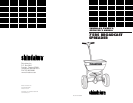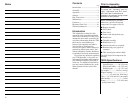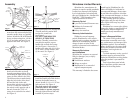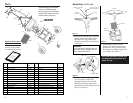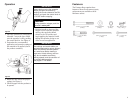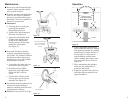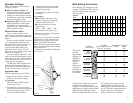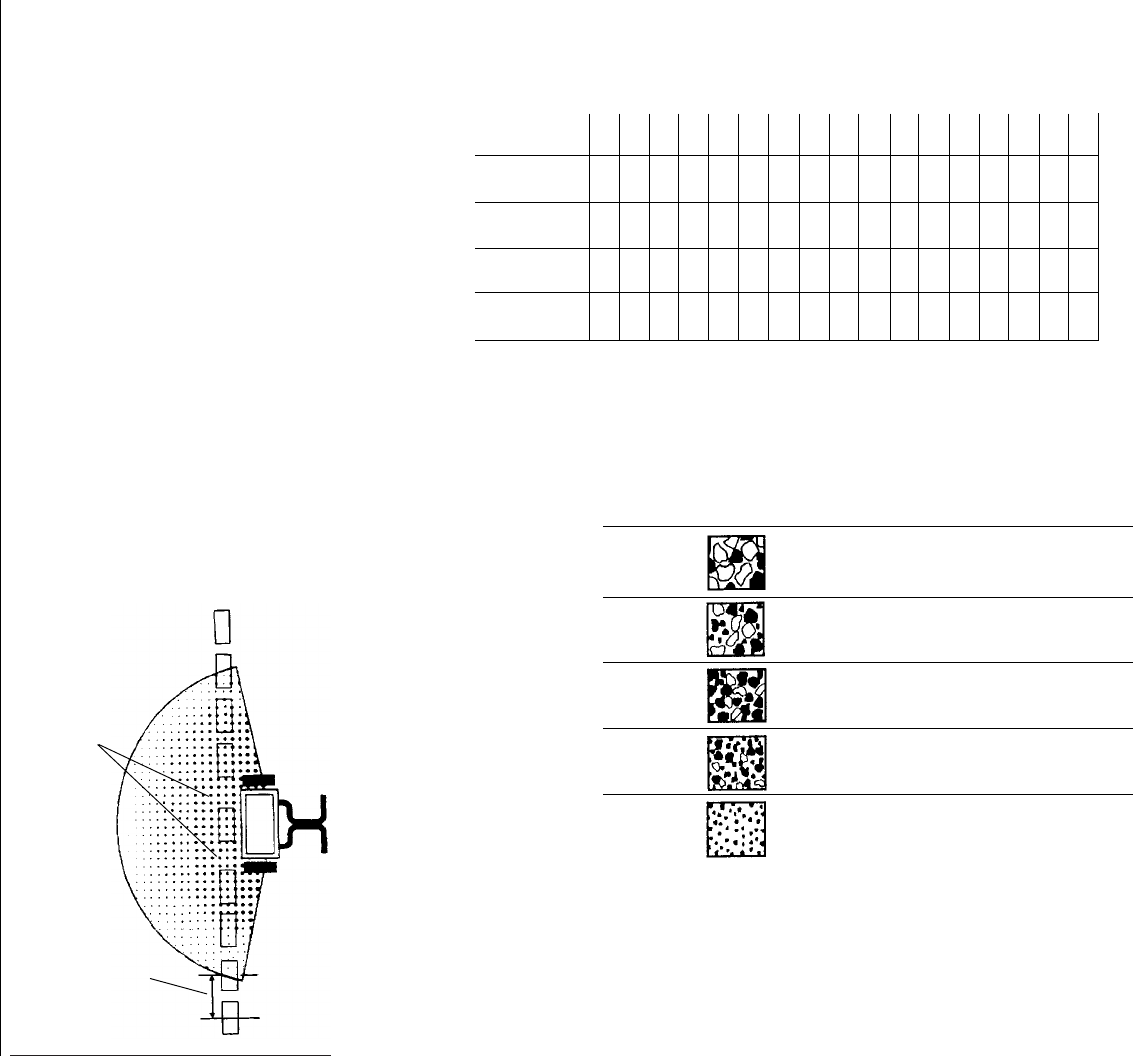
6
Figure 11
When determining correct spreader
settings, consider:
■ Effective Pattern Width: The
actual width in which the material
is applied. Label instructions and
settings are useful guides, but only
an actual test can provide a reliable
and accurate pattern width.
■ Application Rate: The amount of
material applied per 1000 square
feet (before you can determine
application rate, you must know the
effective pattern width).
Effective Pattern Width
You can make a simple visual
pattern test by operating the spreader
over a non-turf area and evaluating the
pattern.
A more accurate method is to place
a row of disposable aluminum cake
pans about 1 foot apart on centers as
shown in Figure 11. Set the rate
control at the middle setting (see
Operation, Step 3, Figure 11,) and
make three or four passes in the same
direction. See Figure 11.
Pour the material collected in each
cake pan into individual bottles or jars
of the same size, then set them side by
side in the order they were collected
and inspect the containers.
The Effective Pattern Width is the
distance out from the spreader to a
point where the amount of material is
1/2 the amount in the center pans.
Spreader Settings
Space pans
1 foot on
centers
Space for
wheel track
Direction of
Operation
Application Rate
Calculate application rate as follows:
1. Determine the Effective Pattern
Width (see the previous page).
For example:
Effective Pattern Width is deter-
mined to be 10 feet.
2. Determine the coverage require-
ment of the material to be spread in
pounds per 100 square feet. This
can be calculated as follows:
a. Divide the weight of a container
of material by the recommended
square-foot coverage.
b. Multiply the result by 100 (add
two zeros).
For example:
■ According to the label on the
container, 25 pounds of material
will cover 5000 square feet.
■ Calculate average coverage
requirement–
25 lbs נ 5000 ס 000.5 ן 100 ס
0.5 pounds per 100 square feet
3. Measure out an area of 100 square
feet (10 by 10 feet).
Weigh out 15 to 20 pounds of material
and spread it over the measured 100
square-foot area, applying in 10-foot
swaths (10-foot Effective Pattern
Width). Weigh the material remaining
in the hopper and adjust the discharge
chute as required.
Repeat the test until the application
rate is correct.
Shindaiwa
75RS 2 3 4 5 6 7 8 9 10 11 12 13 14 15 16 17 18
Scotts
Speedy Green - - 2 - 3 - 4 - 5 - 6 - 7 - 8 - -
PrizeLAWN
BF-1/CBR III G H J K M N N1/2 O P1/2 Q R S T U V X Z
Scotts
R8A/SR1/AP I J L M O P - Q - S T U - V W X Z
Bag Rate Approximate Spread
pounds of material used per Setting Width
1000 sq.ft. of coverage (feet)
5612
10 9 12
15 11 12
5510
10 7 10
15 9 10
1210
2410
3510
568
10 9 8
15 11 8
546
10 5 to
15 6 8
7
LARGE,
HEAVY
PARTICLES
Fertilizer
Particle Size
MEDIUM,
MIXED
PARTICLES
SMALL
PARTICLES
(NITROGEN)
MIXED-SIZE
PARTICLES,
SOME FINES
LIGHT
WEIGHT
PARTICLES
Rate Setting Conversion
The following is a comparison of the
settings of a Shindaiwa 75RS with the
equivalent approximate settings of
other spreaders.
This charts
provides
approximate
settings of a
Shindaiwa
75RS when
only the
product
weight, area
coverage, or
inspection of
the material
is available.
Conversions should only be used as
guidelines for establishing rate
settings. To obtain the most accurate
application rate, follow the procedures
described in the Effective Pattern
Width and Application Rate sections.
The settings shown here are only
approximations and will vary with
walking speed, turf condition, humid-
ity, etc. Warranties and guarantees of
actual coverage or uniformity are
neither expressed nor implied.
Lesco
Hi-Wheel
E F G H I J K L - - M N O - P R S



